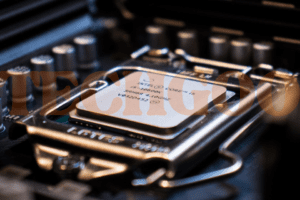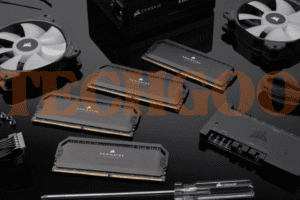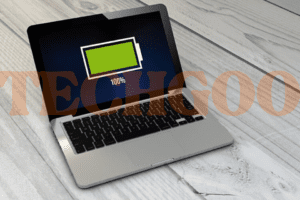The battery in a Microsoft Surface typically lasts for several hours before it wears out. Protecting and preserving your Surface battery can help extend its lifespan.
Microsoft Surface is a popular device known for its versatility and portability. One of the key concerns for users is the longevity of the battery and how long it will last before wearing out. We will discuss the average lifespan of a Microsoft Surface battery and provide tips on how to maximize its longevity.
By following these recommendations, you can ensure that your Surface battery remains efficient and reliable over an extended period of time. Let’s explore how you can make the most out of your Microsoft Surface battery.
Factors Affecting Microsoft Surface Battery Life
When it comes to the battery life of your Microsoft Surface, there are several factors that can affect how long it lasts before it starts to wear out. These factors include the display brightness, power-hungry programs and apps, and background processes and notifications.
Display Brightness
The brightness level of your Microsoft Surface’s display can greatly impact its battery life. Higher brightness settings require more power, which means that keeping your display brightness at a lower level can help conserve battery life. It’s recommended to adjust your display brightness to a comfortable level that still allows for clear visibility without draining the battery excessively.
Power-hungry Programs and Apps
Certain programs and apps on your Microsoft Surface may be power-hungry and consume more battery life than others. These can include resource-intensive applications like graphic design software or video editing programs. To optimize your battery life, it’s important to be mindful of which programs and apps you have running in the background. Closing unnecessary applications can help conserve battery power and extend the overall lifespan of your Microsoft Surface’s battery.
Background Processes and Notifications
Background processes and notifications can also impact your Microsoft Surface’s battery life. These processes, such as automatic software updates and system scans, can consume valuable energy even when you’re not actively using your device. Disabling unnecessary notifications and limiting background processes can help minimize battery drain and optimize the longevity of your battery.
By considering these factors and making mindful adjustments to your Microsoft Surface’s settings and app usage, you can maximize the lifespan of your battery and ensure that it lasts as long as possible before wearing out.
Understanding Battery Wear and Tear
Definition of battery wear
Battery wear refers to the gradual degradation of a battery’s capacity and performance over time. It is a natural process that occurs with all rechargeable batteries, including those found in Microsoft Surface devices. As batteries are used and charged, chemical reactions within the battery cause its capacity to diminish, resulting in shorter overall battery life.
How battery wear impacts performance
Battery wear directly impacts the performance of a Microsoft Surface device. As the battery’s capacity decreases, the device will have a shorter runtime before needing to be recharged. This means that users may find themselves needing to charge their device more frequently as the battery wears out.
Furthermore, battery wear can also lead to reduced overall performance. As the battery’s ability to deliver power diminishes, the device may experience slower processing speeds or even unexpected shutdowns when under heavy load. This can be particularly frustrating for users who rely on their Microsoft Surface for demanding tasks such as graphic design or video editing.
Battery capacity and cycle count
The capacity of a battery refers to the amount of charge it can store. Over time, as a battery wears out, its capacity decreases. This means that a battery that was once capable of providing, for example, 10 hours of runtime may now only provide 5 hours.
Cycle count, on the other hand, refers to the number of charge-discharge cycles a battery has gone through. Each time a battery is charged and then discharged, it completes one cycle. Battery wear tends to increase with the number of cycles a battery has gone through.
Ensuring battery longevity
To maximize the lifespan of your Microsoft Surface battery and delay the effects of wear and tear, there are some steps you can take:
- Avoid consistently draining the battery to 0% or charging it to 100%. Instead, aim to keep the battery level between 20% and 80%.
- Disconnect the charger once the battery reaches around 80% to prevent overcharging, as this can contribute to wear.
- Avoid exposing the device to extreme temperatures, as both high and low temperatures can impact battery performance.
- Regularly update the device’s operating system and firmware, as manufacturers often release updates that can optimize battery performance.
- Consider decreasing screen brightness and disabling unnecessary background processes to conserve battery life.
By following these practices, you can help prolong the life of your Microsoft Surface battery and minimize the impact of wear and tear on its performance.
Strategies To Maximize Battery Lifespan
Adjusting power settings
Adjusting the power settings on your Microsoft Surface can greatly extend the lifespan of your battery. By reducing the power consumption of your device, you can ensure that your battery lasts longer before it wears out. Here are a few power settings to consider adjusting:
- Dimming the screen brightness
- Shortening the screen timeout duration
- Enabling power saving mode when the battery is low
Disabling unnecessary background processes
Background processes running on your Microsoft Surface can drain your battery faster than you realize. Disabling unnecessary background processes can help maximize battery lifespan. Here’s how you can do it:
- Press Ctrl + Shift + Esc to open the Task Manager.
- Click on the Processes tab.
- Identify any processes that are using a significant amount of CPU or memory.
- Right-click on the process and select End Task.
Managing battery-intensive apps and programs
Certain apps and programs can be more battery-intensive than others. Managing these battery-intensive apps and programs can help prolong your battery lifespan. Here are some tips:
- Close any apps or programs that you don’t need.
- Limit the number of browser tabs open at once.
- Use lightweight alternatives to resource-heavy applications.
Utilizing battery saver mode
Microsoft Surface devices come with a built-in battery saver mode that can help extend battery life. Here’s how you can enable it:
- Click on the Battery icon in the taskbar.
- Select Battery saver mode.
- Customize the settings to your preference.
Signs Of A Worn-Out Battery In A Microsoft Surface
If you own a Microsoft Surface, you may be wondering how long its battery will last before it starts to wear out. While the lifespan of a battery largely depends on usage patterns and maintenance, there are certain signs that indicate a battery is nearing the end of its life.
Decreased battery life and performance
One of the most common signs of a worn-out battery in a Microsoft Surface is a significant decrease in battery life and overall performance. If you notice that your Surface isn’t lasting as long on a single charge as it used to or if it is taking longer to recharge, it could be a sign that the battery is deteriorating.
Difficulty holding a charge
Another sign of a worn-out battery is difficulty in holding a charge. You may find that your Surface loses power rapidly even when it is not in use or that it shuts down unexpectedly when the battery level is still relatively high. This can be frustrating and inconvenient, especially if you rely on your Surface for work or entertainment.
Overheating issues
Overheating is another common issue that can indicate a worn-out battery in a Microsoft Surface. If you notice that your Surface is getting excessively hot, especially during tasks that were previously handled without any issue, it could be a sign that the battery is no longer functioning optimally.
In conclusion, when the battery in a Microsoft Surface wears out, you may experience decreased battery life and performance, difficulty holding a charge, and overheating issues. If you notice these signs, it may be time to consider replacing the battery or seeking professional assistance.
How To Extend The Lifespan Of A Microsoft Surface Battery
The battery life of a Microsoft Surface is a crucial factor when using the device on-the-go. While all rechargeable batteries wear out eventually, there are steps you can take to extend the lifespan of your Microsoft Surface battery. By implementing proper charging habits and techniques, avoiding extreme temperature conditions, regularly updating device software and drivers, and cleaning and caring for the battery contacts, you can optimize your Microsoft Surface battery performance and ensure it lasts longer before wearing out.
Proper Charging Habits and Techniques
Proper charging habits and techniques are essential for maximizing the lifespan of your Microsoft Surface battery. Here are some tips to follow:
- Avoid letting your battery reach a critically low level before recharging it. It is recommended to charge your device when the battery level dips below 20-30%.
- When charging, use the original charging cable and adapter provided by Microsoft to ensure compatibility and efficient charging.
- Avoid using your Microsoft Surface while it is charging, as this can generate excess heat and potentially shorten battery life.
- Unplug your device once it reaches a full charge. Overcharging can lead to unnecessary stress on the battery.
Avoiding Extreme Temperature Conditions
Extreme temperature conditions can have a detrimental effect on the performance and lifespan of your Microsoft Surface battery. Here’s what you can do:
- Avoid exposing your device to extremely hot or cold temperatures, as this can damage the battery and reduce its efficiency.
- Store your Microsoft Surface in a cool and dry environment when not in use.
- Avoid leaving your device in direct sunlight or inside a parked car, as the heat buildup can be harmful to the battery.
Regularly Updating Device Software and Drivers
Regularly updating your device software and drivers is crucial for maintaining the optimal performance of your Microsoft Surface battery. Here’s what you need to do:
- Go to the Settings menu on your Microsoft Surface.
- Select the “Windows Update” option.
- Click on “Check for updates” to ensure your device has the latest software updates and drivers installed.
- Install any available updates, including optional updates.
Cleaning and Caring for the Battery Contacts
Keeping the battery contacts clean and well-maintained is essential for ensuring maximum battery performance. Follow these steps:
- Power off your Microsoft Surface.
- Use a soft, lint-free cloth slightly dampened with water or isopropyl alcohol to clean the battery contacts on both the device and the battery itself.
- Gently wipe the contacts in a circular motion to remove any dirt, dust, or residue.
- Allow the contacts to air dry completely before reassembling and turning on your device.
By following these guidelines for charging, temperature conditions, software updates, and cleaning the battery contacts, you can extend the lifespan of your Microsoft Surface battery. Implement these practices to ensure your device lasts longer before needing to be replaced or repaired.
When To Replace A Microsoft Surface Battery
Knowing when to replace the battery in your Microsoft Surface can be crucial to ensure uninterrupted usage and optimal performance. Over time, all batteries wear out, and it is essential to be aware of the signs that indicate a deteriorating battery. In this article, we will explore the various methods to determine if your Microsoft Surface battery needs replacement and the available options for battery replacement.
Consultation with Microsoft Support
If you suspect that your Microsoft Surface battery is not functioning as it should, consulting with the expert technicians at Microsoft Support is the first step towards resolution. They can provide valuable guidance on whether or not your battery needs replacement and offer necessary troubleshooting steps. To contact Microsoft Support, visit their official website or call their dedicated helpline.
Professional Examination and Diagnosis
In certain cases, a thorough examination and diagnosis by a professional may be necessary to accurately determine the condition of your Microsoft Surface battery. Certified technicians possess specialized tools and expertise to assess battery health and identify any underlying issues. Seek out reputable service centers or contact Microsoft Support to inquire about professional examination and diagnosis options.
Available Options for Battery Replacement
If it is determined that your Microsoft Surface battery requires replacement, you will have several options to choose from. It is important to note that Surface batteries are not user-replaceable, so the replacement process must be carried out by an authorized service provider. The available options for battery replacement include:
- Contacting Microsoft Support to arrange for battery replacement service.
- Scheduling an appointment at an authorized service center for professional battery replacement.
- Exploring third-party repair services that specialize in Microsoft Surface devices.
When considering any of these options, ensure that the service provider uses genuine Microsoft Surface batteries to guarantee compatibility and optimal performance.
Frequently Asked Questions For How Long Should The Battery In A Microsoft Surface Last Before It Wears Out?
Why Does My Microsoft Surface Lose Battery So Fast?
To address the issue of your Microsoft Surface losing battery quickly, check Task Manager for apps with high battery consumption and close unused ones. Run the Surface Diagnostic Toolkit and ensure all updates, including optional updates, are installed. To check for updates, go to Settings > Windows updates > Check for updates.
How Do I Know If My Surface Battery Is Bad?
To check if your Surface battery is bad, open Command Prompt, right-click Start button, select “Run as administrator. ” Copy and paste this command: powercfg /batteryreport /output “C:\battery_report. html”. It will generate an HTML file indicating your battery’s health.
Does Keeping Surface Plugged In Ruin The Battery?
Keeping your Surface plugged in does not ruin the battery.
Can You Change The Battery In A Microsoft Surface?
Unfortunately, you cannot change the battery in a Microsoft Surface. If your battery stops working, you will need to have the device repaired or replaced entirely. Contact Microsoft assisted support for assistance and further options.
Conclusion
The lifespan of the battery in a Microsoft Surface depends on various factors such as usage patterns and settings. While there is no exact number of years that can be provided, it is important to take steps to maximize the battery life.
This includes performing regular updates, closing unused apps, and following best practices recommended by Microsoft. By taking proper care of the battery, users can ensure that it lasts as long as possible before wearing out.




